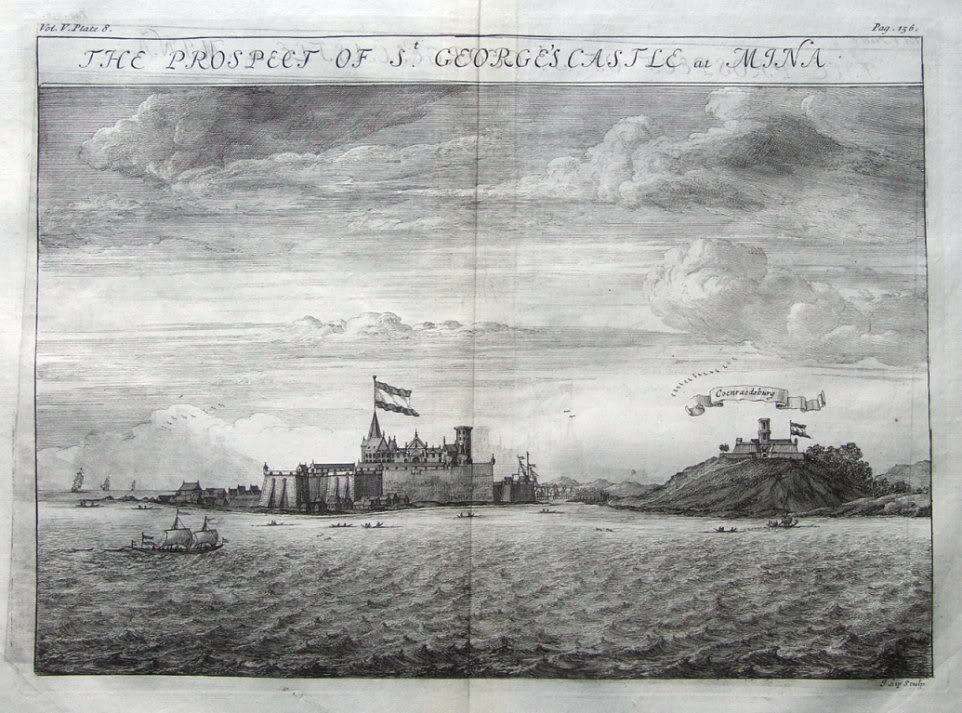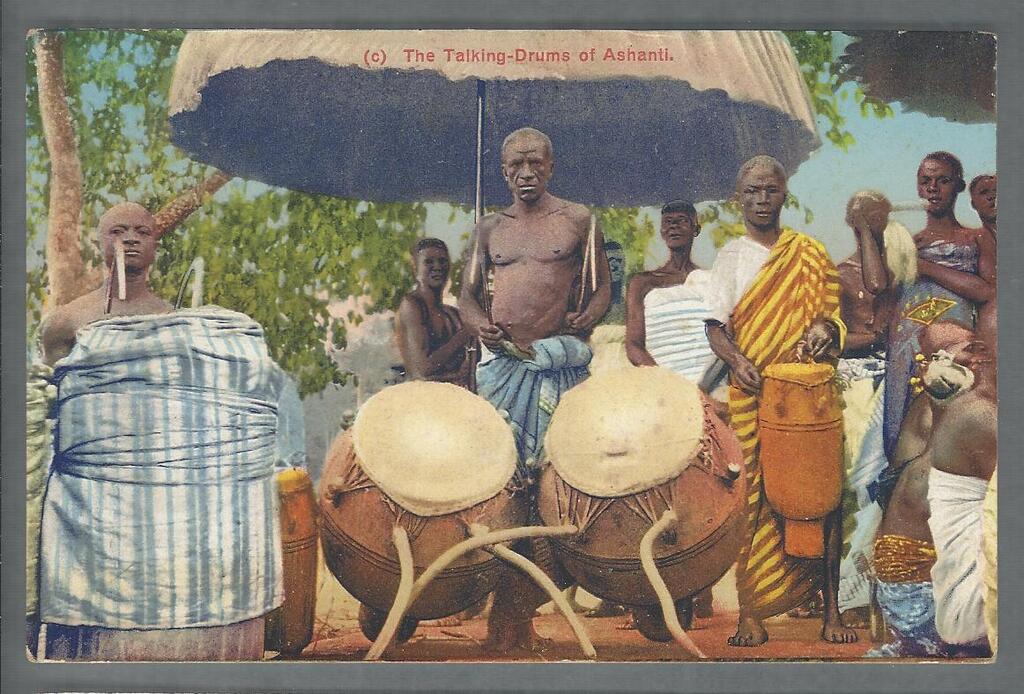
(c) Remo Kurka / Elmina - Early picture of the two castles.
The people living along the West African coast at Elmina around the fifteenth century were presumably Fante. The Fante ethnicity bears an uncertain relationship to "Akan," itself a word connoting originality from the root word, "kan", to be first or original.
Among their ancestors were merchants and miners trading gold into the Mediterranean and Near Eastern worlds from medieval times. The ancestors of the Akan-speakers of the forests however undoubtedly came from north of the forest.
The people on the West African coast were organized into numerous populations that were drawn according to kinship lines.
Advertisement

Family was extremely important in society, and family heads were united in communities under a recognized local authority. Along the
Gold Coast alone, more than twenty independent kingdom-states existed. Elmina lay between two different Fante kingdoms, Fetu and Eguafo. While there was a relative degree of interstate rivalry, peoples generally intermingled freely.
Trade between localities was important for the economy. The coastal people also had strong trade relations with the Sudanese empires to the north.
St. Georges Castle Elmina Cape Coast
West Africans nurtured ancient connections to other parts of the world. Common metals trade, iconic artistic forms, and agricultural borrowing show that trans-Saharan and regional coastal connections thrived.
The Portuguese in 1471 were the first Europeans to visit the Gold Coast as such, but not necessarily the first sailors to reach the port.
Advertisement